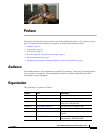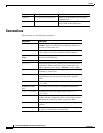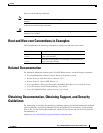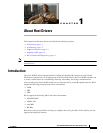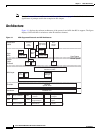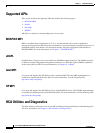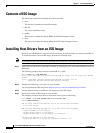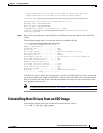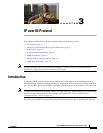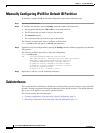
1-3
Cisco SFS InfiniBand Host Drivers User Guide for Linux
OL-12309-01
Chapter 1 About Host Drivers
Supported Protocols
Supported Protocols
This section describes the supported protocols and includes the following topics:
• IPoIB
• SRP
• SDP
Protocol here refers to software in the networking layer in kernel space.
IPoIB
The IPoIB protocol passes IP traffic over the IB network. Configuring IPoIB requires similar steps to
configuring IP on an Ethernet network. SDP relies on IPoIB to resolve IP addresses. (See the “SDP”
section on page 1-3.)
To configure IPoIB, you assign an IP address and subnet mask to each IB port. IPoIB automatically adds
IB interface names to the IP network configuration. To configure IPoIB, see Chapter 3, “IP over IB
Protocol.”
SRP
SRP runs SCSI commands across RDMA-capable networks so that IB hosts can communicate with Fibre
Channel storage devices and IB-attached storage devices. SRP requires an SFS with a Fibre Channel
gateway to connect the host to Fibre Channel storage. In conjunction with an SFS, SRP disguises
IB-attached hosts as Fibre Channel-attached hosts. The topology transparency feature lets Fibre Channel
storage communicate seamlessly with IB-attached hosts (known as SRP hosts). For configuration
instructions, see Chapter 4, “SCSI RDMA Protocol.”
SDP
SDP is an IB-specific upper- layer protocol. It defines a standard wire protocol to support stream sockets
networking over IB. SDP enables sockets-based applications to take advantage of the enhanced
performance features provided by IB and achieves lower latency and higher bandwidth than IPoIB
running sockets-based applications. It provides a high-performance, data transfer protocol for
stream-socket networking over an IB fabric. You can configure the driver to automatically translate TCP
to SDP based on a source IP, a destination, or an application name. For configuration instructions, see
Chapter 5, “Sockets Direct Protocol.”





